Macaws and parrots of the Amazon rainforest gather in large numbers on exposed river banks to feed on clay. They create a colorful scene that has surprised scientists and everyone.
But why do these birds eat clay? One of the most accepted theories is that they lack sodium in their diet. Sodium is needed for countless bodily functions such as generating nerve impulses, maintaining electrolyte balance, heart activity, and metabolic functions.
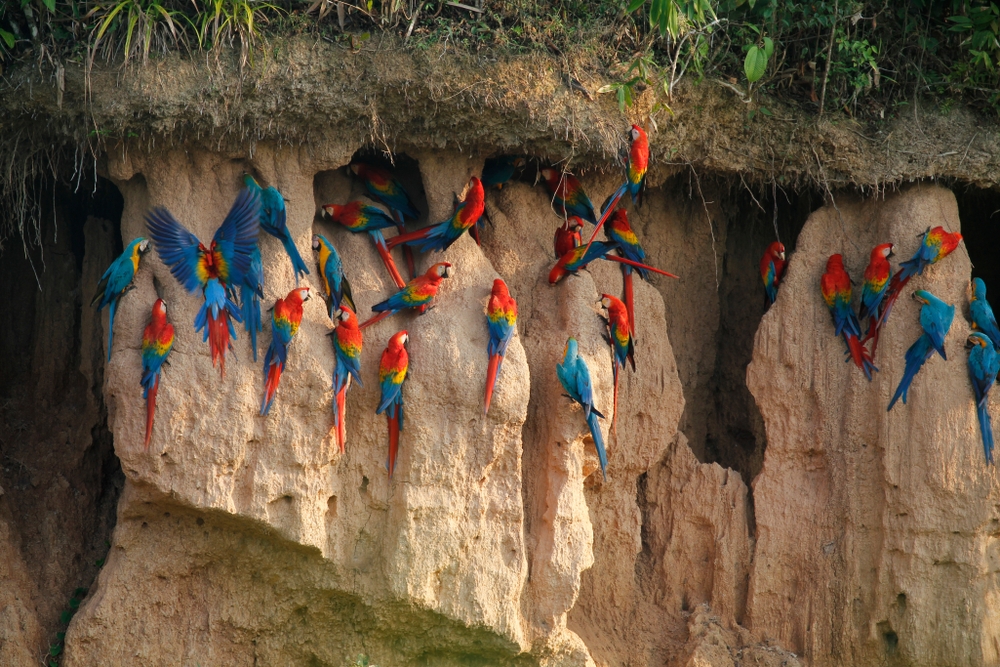
Red and green parrots at a clay mine in the Peruvian Amazon rainforest
For Amazonian parrots, sodium is essential for nerve function and muscle contraction. Sodium is hard to find in tropical rainforests, but is stored in large quantities in clay tablets.
Instead, the birds preferred soils with higher sodium content. In one clayey area, on a particular bend in the Manu River, the researchers observed parrots eating a layer of soil that ran hundreds of meters horizontally along that bend. This layer was found to have a much higher sodium content than the layers above and below.
Donald Brightsmith conducted a 16-year project observing parrots in the Amazon rainforest to study the parrots’ clay-eating habits. Brightsmith argues that there is a connection between this clay-eating habit and the fact that the western Amazon basin is particularly low in salt.
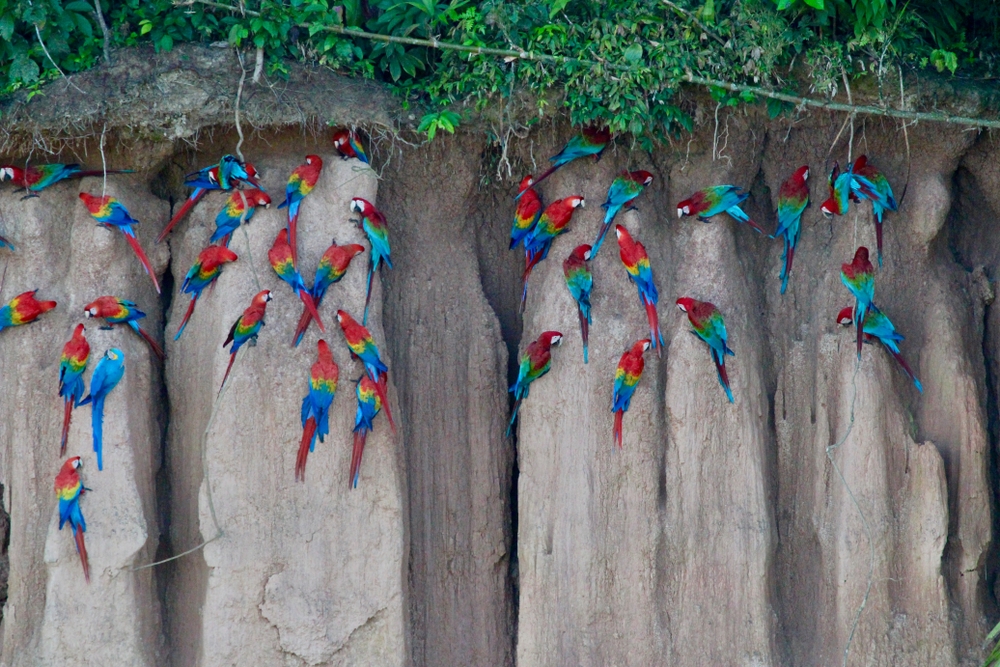
Macaws near Manu National Park Peru.
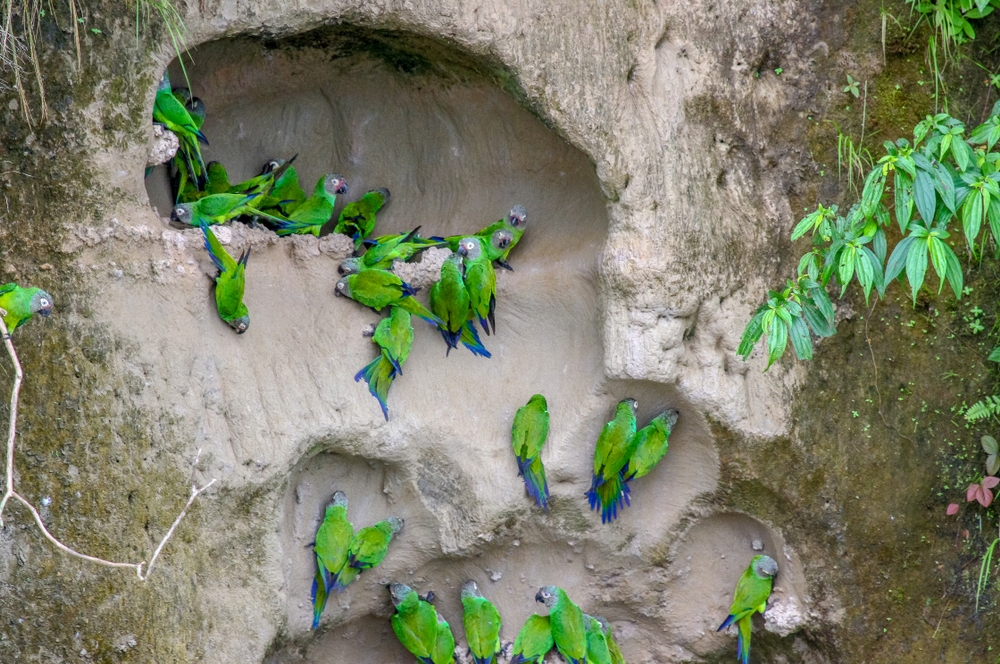
Blue-headed parrot (Pionus menstruus) at a clay quarry on the banks of the Napo River in Ecuador
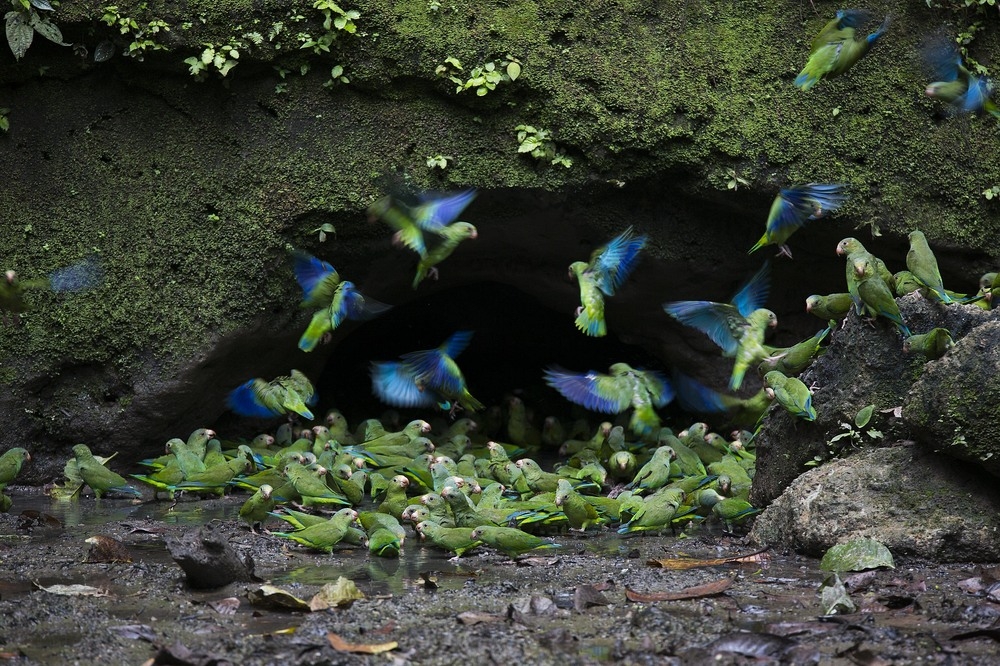
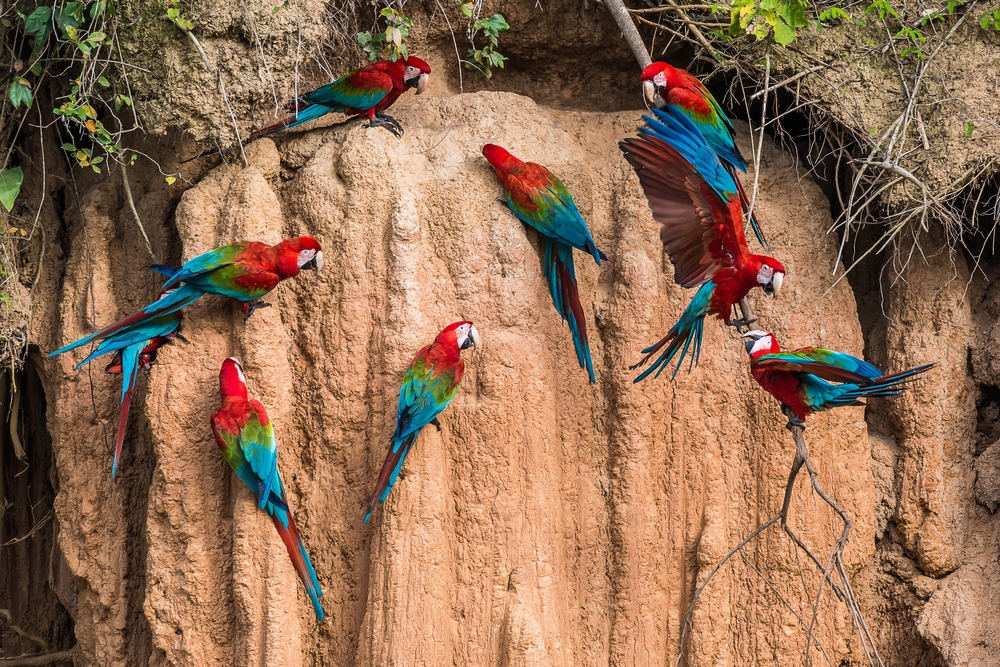
Macaws eat clay in the Amazon rainforest
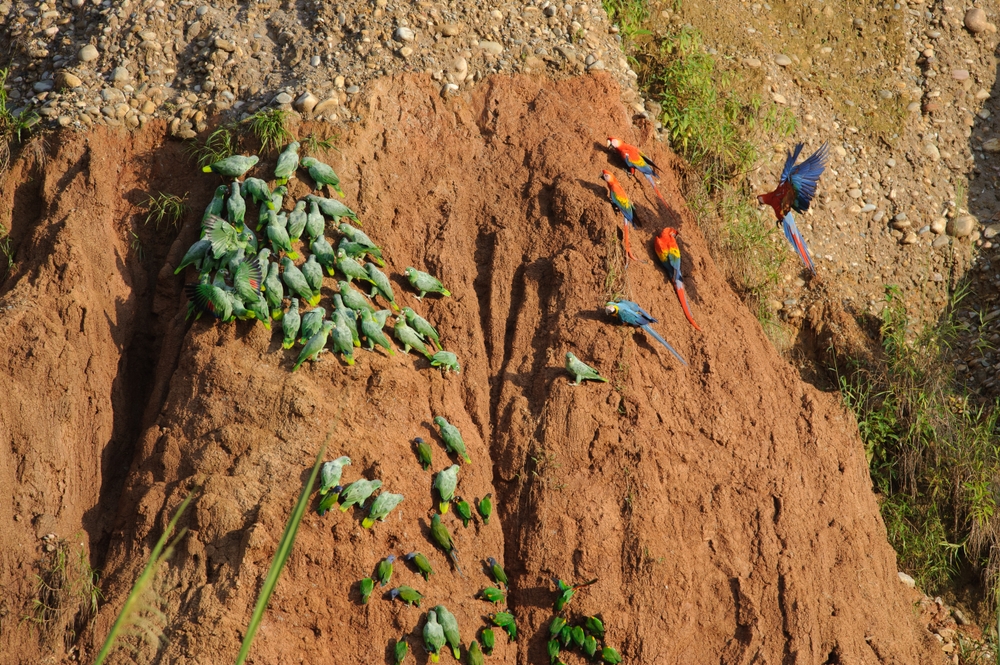
Parrots at clay in Tambopata National Reserve, Peru
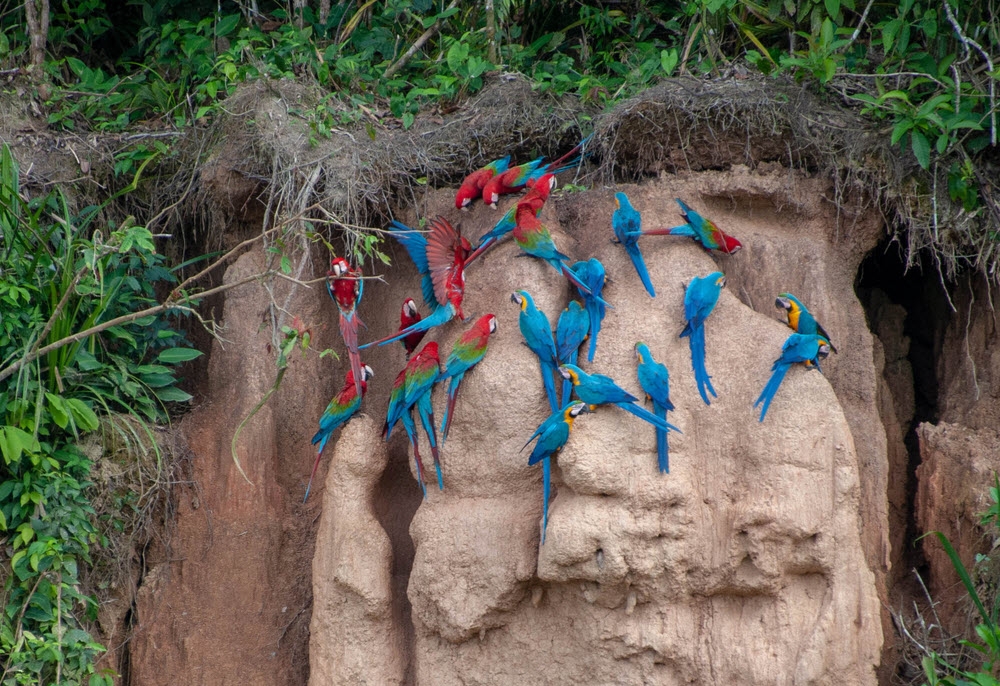
There are many locations in Paraguay, Peru, Bolivia, Brazil and Ecuador in the Amazon rainforest where clay is abundant, but the most popular and accessible locations are in the Tambopata National Reserve in southeastern Peru.
Another popular place to witness colorful parrots is at Manu National Park (Peru) or Yasuni National Park in Ecuador.





